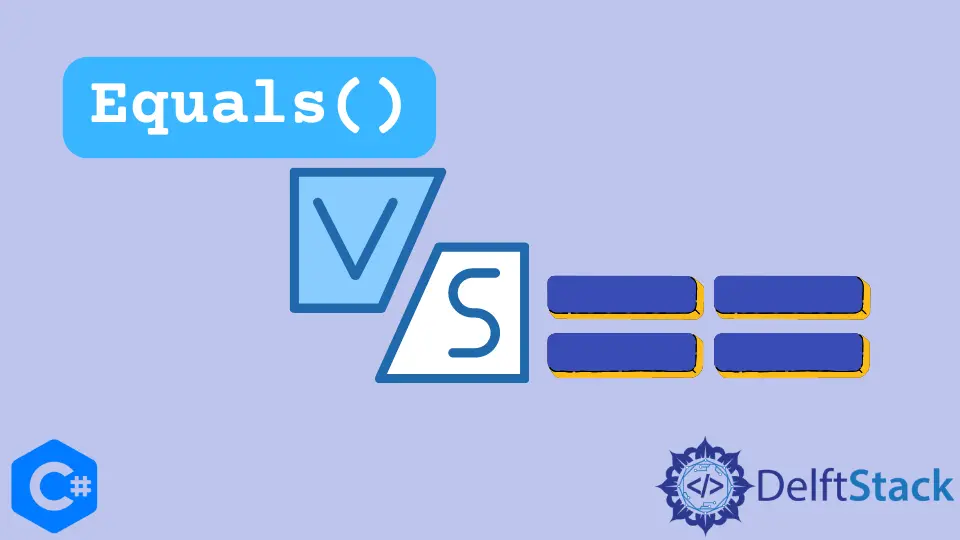C# Equals() vs ==

This tutorial will highlight the differences and similarities of the == operator and the Equals() function in C#.
Difference Between the == Operator and the Equals() Function in C#
The == operator is a comparison operator in C#. The == operator compares the reference identities of both operands. On the other hand, the Equals() function compares the contents of two string variables in C#. Typically, both are used for comparing two values. But, they can have different results in different scenarios. The following code example will show a scenario where both the == operator and the Equals() function are true.
using System;
namespace comparison {
class Program {
static void Main(string[] args) {
object var1 = "MMA";
object var2 = var1;
if (var1 == var2) {
Console.WriteLine("== is true");
}
if (var1.Equals(var2)) {
Console.WriteLine("Equals is true");
}
}
}
}
Output:
== is true
Equals is true
In the above code, we initialized an object variable var2 with var2 = var1. It means that both var1 and var2 refer to the same identity in the memory. So, the == operator will result in a true outcome. Since they both have the same contents inside them, the Equals() function will also give true.
Now, we will demonstrate another scenario in which the == operator gives false but the Equals() function returns a true value. This scenario is discussed in the code example below.
using System;
namespace comparison {
class Program {
static void Main(string[] args) {
object var1 = "MMA";
char[] varc = { 'M', 'M', 'A' };
object var2 = new string(varc);
if (var1 == var2) {
Console.WriteLine("== is true");
}
if (var1.Equals(var2)) {
Console.WriteLine("Equals is true");
}
}
}
}
Output:
Equals is true
In the above code, we created the character array varc and converted it to the object variable var2 by passing varc in the constructor of a string variable. It means that var1 and var2 are both pointing at different identities in the memory. The == operator returns false because it compares the reference identities of var1 and var2. But, the Equals() function returns true because it is comparing the contents of var1 and var2.
Maisam is a highly skilled and motivated Data Scientist. He has over 4 years of experience with Python programming language. He loves solving complex problems and sharing his results on the internet.
LinkedIn